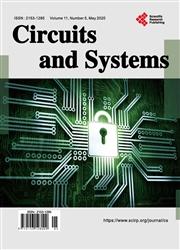CMOS VDIBAs-Based Single-Resistance-Controlled Voltage-Mode Sinusoidal Oscillator
引用次数: 10
Abstract
In this communication, a new single-resistance controlled sinusoidal oscillator (SRCO) has been presented. The presented SRCO uses two voltage differencing inverting buffered amplifiers (VDIBAs), one resistor and two capacitors in which one is grounded (GC) and the other one is floating (FC). The proposed structure offers the following advantageous features: 1) independent control of oscillation condition (OC) and oscillation frequency (OF); 2) low passive and active sensitivities and 3) very good frequency stability. The non-ideal effects of the VDIBA on the proposed oscillator have also been investigated. The proposed SRCO has been tested for its robustness using Monte-Carlo simulations. The check of the validity of the presented SRCO has been established by SPICE simulations using 0.18 μm TSMC technology.基于CMOS vdibas的单电阻控制电压模式正弦振荡器
在这种通信中,提出了一种新的单电阻控制正弦振荡器(SRCO)。所提出的SRCO使用两个压差反相缓冲放大器(VDIBA)、一个电阻器和两个电容器,其中一个接地(GC),另一个浮动(FC)。该结构具有以下优点:1)独立控制振荡条件(OC)和振荡频率(of);2) 低的无源和有源灵敏度和3)非常好的频率稳定性。还研究了VDIBA对所提出的振荡器的非理想影响。所提出的SRCO已经通过蒙特卡洛模拟测试了其鲁棒性。通过使用0.18μm TSMC技术的SPICE模拟,对所提出的SRCO的有效性进行了检验。
本文章由计算机程序翻译,如有差异,请以英文原文为准。
求助全文
约1分钟内获得全文
求助全文

 求助内容:
求助内容: 应助结果提醒方式:
应助结果提醒方式:


